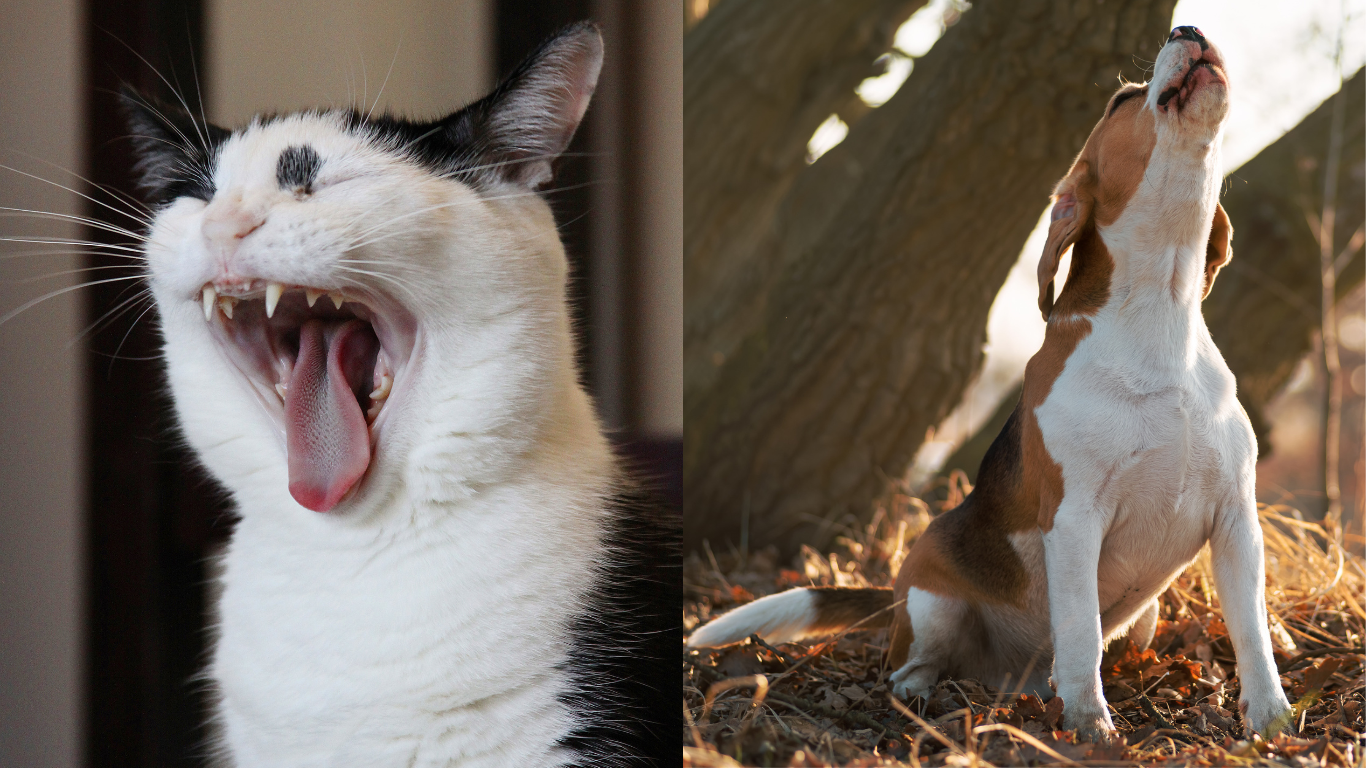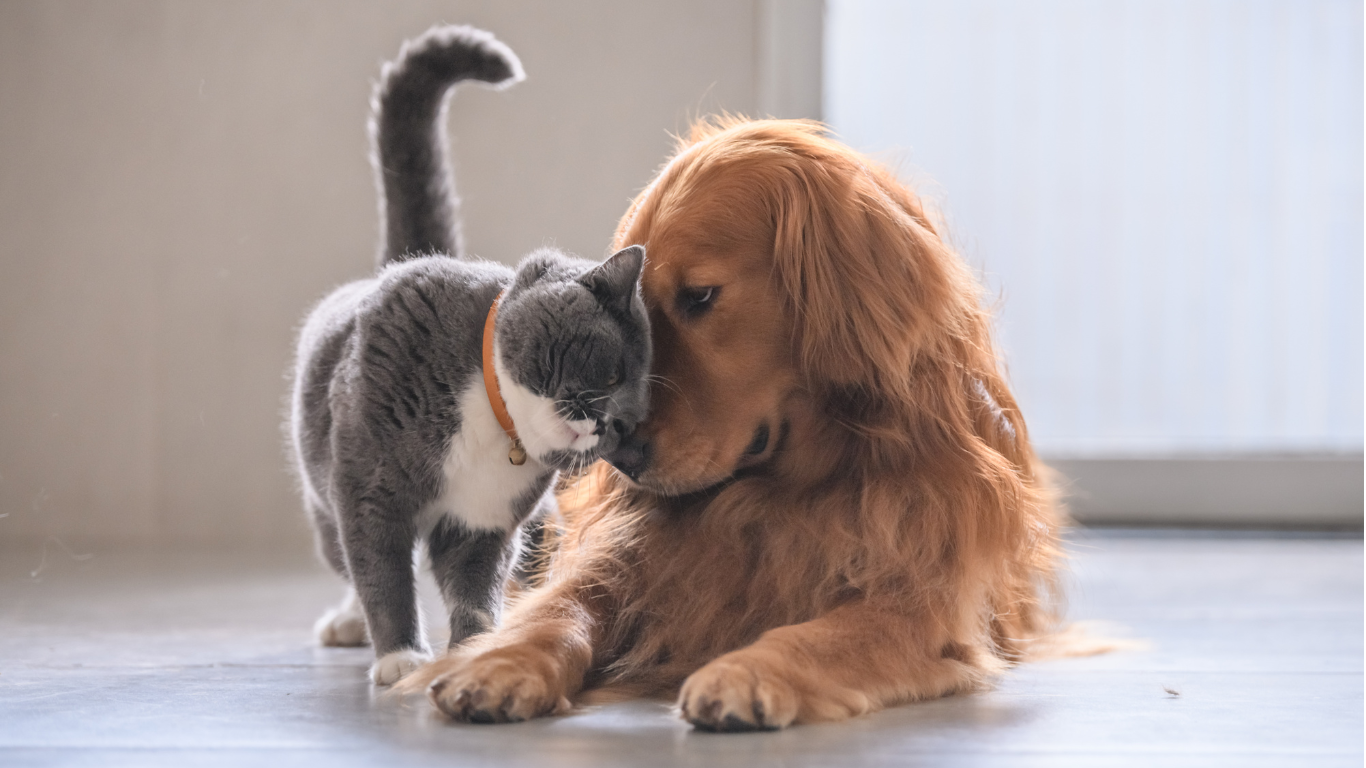To get in touch with their environment, dogs and cats use different types of communication - they express themselves with sounds, their gestures and facial expressions. This body language can have completely opposite meanings in dogs and cats, which is why misunderstandings can quickly arise between the two.
Gestures and facial expressions in dogs and cats often serve to avoid conflicts with other dogs. Corresponding dominance, threat or submissive signals indicate whether an argument is about to escalate or not.
The tail wagging
What is associated with a very good mood for dogs means something completely different for cats: the rapid wagging of the tail. While dogs show joy or excitement by whipping their tail from left to right, a cat's wildly twitching tail is often a sign of discomfort or hunting instinct.
A conflict situation quickly arises when the dog thinks that now is the right time to play with his friend. Of course, this also applies to cat owners who want to cuddle with their tiger at this moment.
On the other hand, if the cat slowly moves its tail back and forth, it indicates relaxation - if it is erect, it means it is happy to see you. However, a bushy tail that is erect should be treated with caution - this is the warning of an annoyed cat.
Dogs also express other emotions with their tails: If he pulls it between his legs, this is a clear sign of his discomfort and fear - if he stretches it straight up, this can indicate that something has made him angry. 
The snout
Raised lips and showing teeth are a clear threat to dogs and cats alike - although dogs also use this to express that they have smelled something unpleasant.
But if the teeth shown are accompanied by growling or hissing, your animal feels threatened.
In a relaxed, normal state, the cat's lips do not move much and the whiskers stand inconspicuously to the side. When something exciting happens, cats spread their whiskers wide so they don't miss anything. When afraid or skeptical, the cat's face appears narrow and pointed: the lips are pressed together and the whiskers are placed close to the muzzle.
When tigers pull up their upper lip and drop their lower jaw, they express frustration. 
The hair
If the dog raises the hair on its back, it is afraid or feels threatened. A dog with raised back hair should not be harassed.
Cats also raise their hair when they perceive a situation to be dangerous. Then the familiar cat hump appears, which can only be understood as a threat in combination with bushy tail hair. Cats also hump their backs when they feel good. 
The ears
If the ears are pricked up and pointed forward, this means that both dogs and cats have their curiosity aroused.
In fact, your cat's mood can be easily read by its ears. If she slowly turns her ears to the side, she is expressing her dissatisfaction. If the ears are turned back so far that you can see the backs of them, it signals fear and that she feels cornered. If this fear then turns into aggression, she puts her ears flat against her head - this is usually when she attacks.
When dogs are afraid, they make themselves small and withdraw - in this they are no different from cats. A dog tucks in his tail and puts his ears back. 
The eyes
A look says more than 1000 words and they are also important signal transmitters for dogs. In combination with the tail, you can quickly see what your four-legged friend's mood is like. This becomes particularly clear when he is preparing for an attack: his eyes are slightly squinted, very focused and his tail is stretched into the air.
However, he expresses fear with wide-open eyes and a tucked tail.
Are the dog's eyes and tail moving, does he appear friendly and dance around? Then he's fine, he's completely relaxed and wants to play.
In cats, fear and aggression can also be distinguished by their pupils . If they are narrow and slit-shaped, the cat is angry. In connection with forward-pointing ears and an attentive body, the willingness to fight is meant to be more playful. Ears that are folded back and pupils are constricted are a warning signal: this is where your cat is getting ready to attack.
When you are afraid, stressed or excited, your pupils are dilated - but here too the rest of your body language is crucial: if you make yourself small and duck away, you are put on the defensive. But if she runs around your legs meowing loudly, while you are preparing her food, her pupils will also be dilated with excitement.
If your cat is friendly towards you, it will slowly wink at you - this is how it shows you its affection.
By the way, neither cats nor dogs particularly like long eye contact, as this usually expresses aggression. Even if it's difficult for you, you shouldn't adore your four-legged friend for long. 
The invisible means of communication
Pheromones are important means of communication for dogs and cats that humans usually don't notice much about.
Cats have scent glands in various parts of their body that they use to release pheromones. These scents are used to recognize members of the same species, but also to mark territory. This also means that your cat will nudge you with its head to show you its affection. With her scent glands on the side of her head with which she marks you - for her you are part of her family and her territory.
Dogs also distribute pheromones to mark their territory and to communicate with each other, primarily through their urine. This is how they recognize the gender of their own species, attract partners willing to mate and warn of enemies.
The sounds
In addition to barking, dogs and cats have a repertoire of sounds with which they can communicate:
- Growling: A clear warning signal when threatened, but also sometimes due to excitement during play.
- Whining/whining: When stressed, many dogs begin to whine for a long time. Short beeping signals shock or pain.
- Howling: In wolves, howling promotes a sense of togetherness - which is why dogs that still have the ability to do so often howl when they experience separation anxiety.
- Woofing: The muffled and short barking indicates that your dog wants to draw attention to something.
 Cats also communicate with sounds, although their meowing is reserved exclusively for humans.
Cats also communicate with sounds, although their meowing is reserved exclusively for humans.
- Meowing: This usually shows that she wants attention or has a request for you.
- Purring: The cat is fine and completely content. But be careful - cats sometimes purr to calm themselves when they are in pain or under severe stress. Here you should pay attention to the rest of your body language.
- Hissing: A warning signal that should be understood as a threat
- Growling: Cats also growl, this strong warning signal indicates that an attack is imminent.
- Screaming: When fighting with other cats, cats scream bloodcurdlingly - they are in fight mode.











